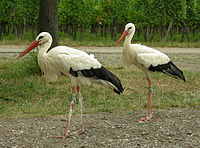Evolution: Misconceptions
This post is just a random list of realizations I had over the course of changing my mind, realizations about my misconceptions of evolution. They are the last of the main points that influenced me and shifted, in my mind, the probability that evolution, rather than YEC, best accounted for the world we see today.
As with all of my posts, I value correction and discussion.
Evolution can’t be true because some creatures, like trilobites, haven’t changed
Sometimes a new creature out-competes its ancestor for its old niche, causing its ancestors to go extinct. But other times newly evolved forms fill new niches in the ecosystem, leaving their ancestors to continue to reproduce un-changed.
Evolution is just random chance; and it’s ridiculous to think random chance made us
Evolution is not random. It it guided by the laws of chemistry, physics, natural selection, etc. An individual mutation might be random chance, but which mutations are selected for and which become dominant in a population is not.
Also, The process of evolution has no goal. It wasn’t striving to create us, or any other specific end product. If there was a goal to create a specific structure or creature, the likelihood it would appear is small. But evolution wasn’t trying to make our modern eye when the first light sensitive cells were formed. The things that happened to be beneficial got passed on, changing into what are today.


